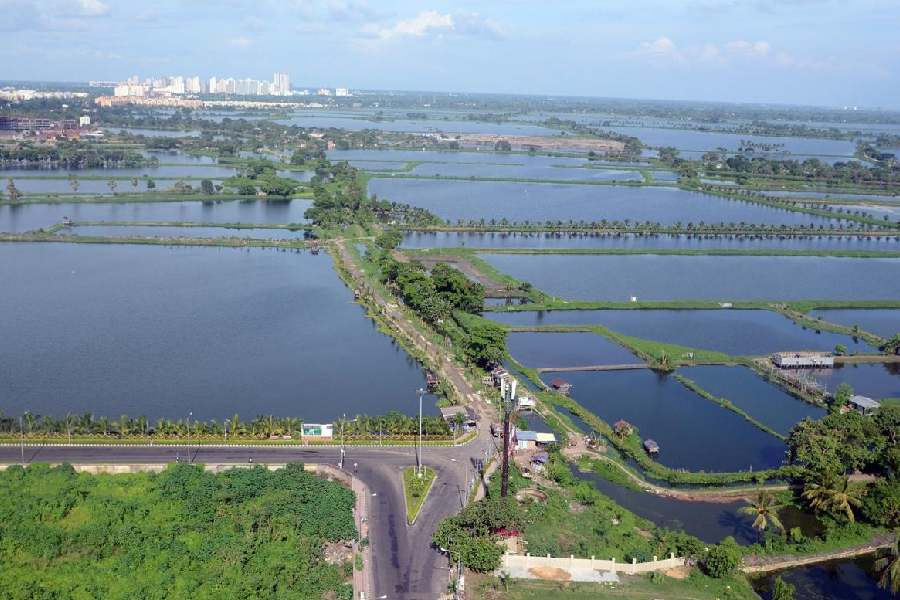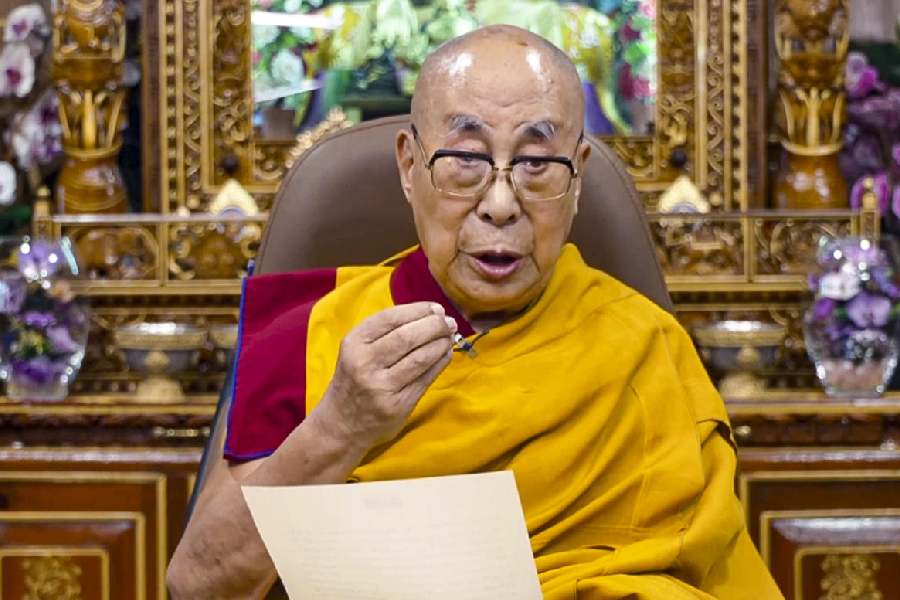 |
| A helicopter, the lifeline of Siachen, makes a sortie. (Below) Jawans outside a shelter |
 |
Siachen Glacier Base Camp, May 13: A downdraught of mad wind catches the rotor blades of the chopper mid flight during a left turn at 20,000 feet. The buffeting pulls the machine down.
For those inside it means the bottom falls out from under the feet, the hands grope for support, the camera goes for a toss, the glasses go awry, blood rushes to the head, the heart knots into a tight little ball.
Squadron Leader Yashwant Daksh in the cockpit looks over his shoulder and winks ? Welcome to Siachen. The glacier is a slush of mud and snow between mountains of rock and ice. In the Kumar Drop Zone below at noon on a fairweather day in midsummer, the winds are howling and the temperature is at minus 15 degrees Celsius.
The Mi 17 1V helicopter can be used like a gunship but is configured to paradrop loads of dry rations, guns, ammunition and medicine into the war zone. Its rear is open with only strips of nylon lash between the inside and the outside.
The ceasefire means that this is a war minus the shooting.
Now the Indian Air Force has flown a team of journalists here because the lookouts in the Pakistani posts may see but may not fire. The visit is part of a build-up to the meeting of the Indian and Pakistani foreign secretaries slated for May 23. On the table are options to de-militarise the glacier.
But soldiers and officers on the ground believe that freezing the war in Siachen will be as easy as stopping the glacier from melting into the Nubra river.
“The weather here is so harsh and the passes so high that only the best of friends and the fiercest of enemies shall meet,” the Western Air Command chief, Air Marshal A.K. Singh, offers an old Ladakhi saying to make his point. “The ceasefire is good and is in the direction of a solution, but there is a long way to go. Operation Meghdoot is on.”
The ceasefire may actually end up making political positions more rigid because the Indian military machine is further entrenched and better networked than ever before. The Indian armed forces are arguing that Siachen is a sustainable holding operation.
In April 1984, Indian troops occupied the Saltoro range flanking the glacier. In the 22 years of Operation Meghdoot, the Pakistanis haven’t been able to go up, the Indians haven’t been able to come down.
If India and Pakistan have the best opportunity to talk peace with the ceasefire holding good since November 2003, there is scarcely any reflection of that optimism on the ground.
“As far as we are concerned, we are in the middle of a military operation and we will continue doing what it takes,” says Brigadier Om Prakash, the commander of the Siachen brigade.
Army and air force commanders at the glacier describe the status quo as “no war no peace”. Indian military posts have become more accessible and casualties are at their lowest since 1984. In the last one year, there has not been a single battle-related casualty. The absence of battle-tension has also brought down weather-related casualties.
This is no mean feat on the glacier where weather-related casualties have totted up a figure of 2000-plus for both Indians and Pakistanis since 1997.
“There was a time when our soldiers would not want to eat. They lose appetite in any case in these heights but they were afraid to eat because they were afraid to defecate. They would have to undress and feared getting frostbitten,” says an army officer at the base camp who is into high-altitude research.
“Now most posts have windproof sheds for toilets. There are still some places where a jawan has to anchor himself to the ground to defecate but there are also better medicines available now, even more pressurised chambers for medical emergencies in some posts. The soldier is better equipped to fight.”
Nearly every company has a doctor from the medical corps. The biggest benefit of the ceasefire has been in terms of communication. Every post has been connected by an army signals telephone network to the base camp.
“There should be no doubt that life here is most difficult and in my book everyone who has done a posting in Siachen is a hero,” a battalion commander who has just flown to the base camp on a Cheetah helicopter from a post at 18,000 feet says.
“But things have changed.” The quarters of battalion commanders, for instance. They have prefabricated shelters with a communications post and insulation that retains heat. “You can be inside with just a kurta and pyjama,” the officer says.
Nearly all posts in the central and northern sub-sectors still have to be served by Cheetah helicopters.
“We have less than 30 seconds at ‘postage-stamp-sized’ helipads at posts like Sonam (21,000 feet) to load or unload,” says Wing Commander Jeene J. Erinjeri, commanding officer of the Siachen Pioneers, the 114 helicopter unit.
But in the southern glacier, the military now has roads to three posts, Gulab, Rewari and Kiran, which overlook Pakistani positions. This is the region of NJ 9842, the map coordinate where the Line of Control ends and the Actual Ground Positions Line (AGPL) begins.
Despite the logistics, Siachen remains treacherously beautiful. A second-in-command of a sub-sector narrates this story of a Pakistani post 500 metres away last week.
“We heard some shouting from our position and I sent three boys to explore. There was small avalanche and we saw three or four Pakistani soldiers on the other side of the feature trying to get down. One of their men was probably buried and they were trying to rescue him. It could have been anyone ? them or us.
“Had it been some time back, we wouldn’t have ventured far enough to be seen. Some one would have fired.”










